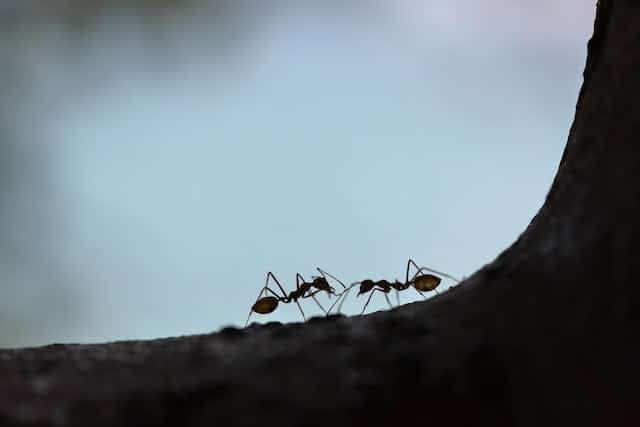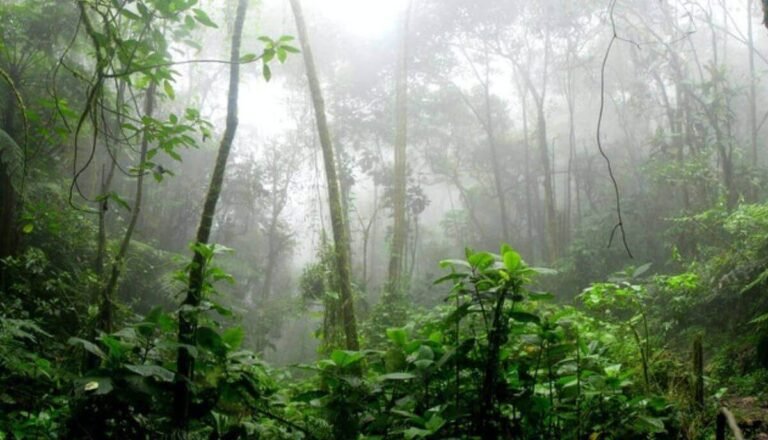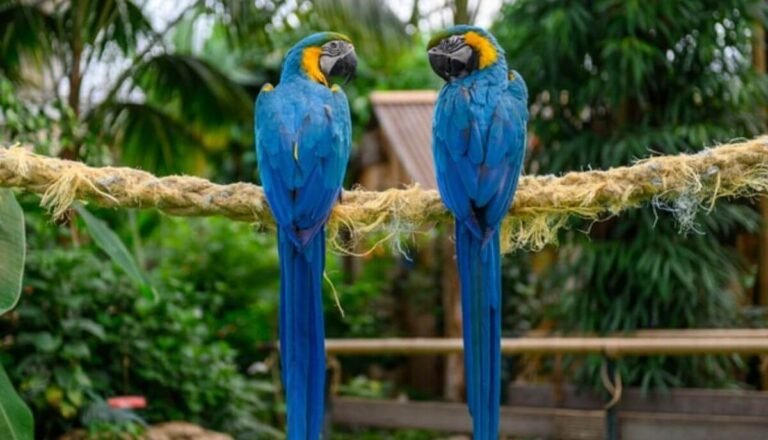Primates And Where to See Them
There are over 260 species of primates living in the world today. They can be found on every continent except for Europe and Antarctica. Primates are very interesting creatures and there are many opportunities to see them up close in zoos, sanctuaries, and even in the wild.
One of the most popular places to see primates is at a zoo. Zoos typically have a variety of different species of primates that you can observe. Many zoos also offer opportunities to feed or even interact with some of the animals.
If you’re interested in learning more about primates, most zoos also offer educational programs or classes.
Sanctuaries provide another option for seeing primates up close. These facilities rescue and care for animals that have been mistreated or displaced from their natural habitats.
Sanctuaries often house a variety of different species, including primates. When visiting a sanctuary, you’ll likely have the opportunity to see the animals being cared for and learn about the work that goes into saving them.
If you’re looking for an even more immersive experience, there are several options for seeing primates in the wild.
Africa is home to many different species of monkeys and apes, which can be seen in national parks like Tanzania’s Serengeti National Park or Uganda’s Kibale National Park. For something closer to home, Costa Rica is home to howler monkeys and spider monkeys that can be spotted in rainforests like Manuel Antonio National Park.
There are over 260 species of primates in the world, and they can be found on every continent except Antarctica. Here are some of the best places to see these amazing animals in their natural habitat.
Central America is home to many different species of primates, including howler monkeys, spider monkeys, and capuchin monkeys.
Costa Rica’s Manuel Antonio National Park is a great place to see all three of these species, as well as sloths and iguanas.
In Africa, you can find chimpanzees, gorillas, and baboons in their native habitats. Tanzania’s Gombe Stream National Park is one of the best places to see chimpanzees in the wild, while Rwanda’s Volcanoes National Park is the place to go if you want to see gorillas.
For baboons, head to Kenya’s Amboseli National Park.
Asia is home to many different types of primates as well, including orangutans (found on the island of Borneo), gibbons (found in Indonesia), and langurs (found throughout India). Thailand’s Khao Yai National Park is a great place to see all three of these species up close.
Finally, North America has its own share of primate species too, including Howler monkeys (found in Mexico) and spider monkeys (found in Central America). The best place to see howler monkeys is at Belize’s Cockscomb Basin Wildlife Sanctuary, while Panama’s Monkey Island is the perfect spot for seeing spider monkeys up close and personal!
Where Do Apes Live
Apes are a type of primate that includes gorillas, chimpanzees, orangutans, and bonobos. They are all members of the family Hominidae, which also includes humans. Apes live in Africa and Southeast Asia.
Gorillas live in the forests of Central Africa. Their diet consists mostly of plants, such as leaves, stems, and roots. They also eat insects and fruit.
Gorillas live in small groups led by a silverback male. Females usually stay with their birth group, while males leave to start their own groups when they reach maturity.
Chimpanzees also live in Africa, specifically in the rainforests of West and Central Africa.
Like gorillas, their diet is mainly plant-based but they also eat meat on occasion. Chimpanzee groups are typically larger than gorilla groups and can have up to 100 individuals. Unlike gorillas, however, chimpanzee groups are not always led by a single dominant male – power is more evenly distributed among group members.
Orangutans are found in the tropical rainforests of Indonesia and Malaysia. Their diet consists mainly of fruits but they will also eat leaves, bark, insects, and even birds’ eggs on occasion. Orangutans live solitary lives except for when females are raising their young – at these times mothers will share nests with their daughters until the offspring reach maturity and strike out on their own again.
Where to Play With Monkeys near Me
Do you love monkeys? Do you want to get up close and personal with these adorable creatures? If so, then you’re in luck!
There are plenty of places where you can play with monkeys near you.
One great option is the Zoo Atlanta. This zoo has a variety of animals, including gorillas, lions, and tigers – but they also have a section just for primates.
You can watch the monkeys swing from vines, play with each other, and even feed them!
If you’re looking for something a little more hands-on, then why not visit a sanctuary? The Monkey Sanctuary in Cornwall is home to over 150 rescued primates.
Here, you can learn all about these amazing animals and even help out with their care. From preparing food to cleaning enclosures, there’s plenty to do – and you’ll get to meet some incredible monkeys along the way.
Of course, if you really want to get close to these fascinating creatures, then there’s nothing quite like seeing them in the wild.
Places like Bali and Thailand are home to troops of wild monkeys that aren’t afraid of humans. Just be careful not to disturb their natural habitat or take anything from them – otherwise, you’re sure to have an unforgettable experience!
Where to See Monkeys near Me
Monkeys are one of the most popular animals in zoos, wildlife sanctuaries, and other attractions. If you’re looking to see monkeys up close, there are plenty of places where you can find them. Here are five great options for seeing monkeys near you:
1. The Houston Zoo is home to more than a dozen different species of monkeys, including gorillas, chimpanzees, and orangutans. You can also see cotton-top tamarins and saki monkeys in the zoo’s rainforest exhibit.
2. The Dallas Zoo has an impressive array of primates on display, including gorillas, chimpanzees, bonobos, and orangutans.
There’s also a colony of free-roaming rhesus macaques that visitors can observe.
3. The San Antonio Zoo is another excellent option for seeing apes and monkeys up close. In addition to gorillas and chimpanzees, the zoo houses mandrills, drills, gibbons, langurs, and marmosets.
4. If you’re willing to travel a bit further afield, Austin’s Zilker Park is home to a troop of around 30 Japanese macaques (also known as snow monkeys). These playful creatures can often be seen bathing in the park’s warm springs or playing in the snow during the winter months.
5. Lastly, if you’re hoping to see wild monkeys rather than those living in captivity, there are several options around Texas including Big Bend National Park and Padre Island National Seashore (both of which have populations of Mexican black howler monkeys).
What Do Monkeys Eat
Whether you’re talking about a Barbary macaque in the Atlas Mountains of Africa or a Japanese macaque in a snow-covered forest, what do monkeys eat? The answer is: just about anything.
Fruits, vegetables, nuts, insects, lizards, birds – if it’s edible and small enough to fit into their mouths, monkeys will give it a try.
In fact, some species of monkey are known to be particularly adventurous eaters, and will munch on everything from scorpions to snakes!
Of course, not all monkeys live in tropical climates where fruits and vegetables are plentiful year-round. Some species – like the Japanese macaque – have adapted to survive in colder environments by adding more meat to their diet.
These “snow monkeys” will often sit in hot springs to keep warm and supplement their diet with whatever small animals they can find scurrying around in the snow.
So next time you see a monkey at the zoo or swinging through the trees, remember that there’s no such thing as a “typical” monkey diet – these creatures are true omnivores who are always willing to try something new!
Where are New World Monkeys Found
New World monkeys are found in Central and South America. They are divided into two families: the Cebidae, which includes capuchins and squirrel monkeys, and the Callitrichidae, which includes marmosets and tamarins. New World monkeys are generally smaller than Old World monkeys, with the exception of the howler monkey.
Most New World monkeys have prehensile tails, meaning they can use their tails to grasp branches.
Where are Prosimians Found
Prosimians are a type of primate that includes lemurs, lorises, and tarsiers. They are found in Africa, Madagascar, and Southeast Asia. Prosimians are generally smaller than other primates and have longer noses.
They are also typically nocturnal animals.
Where are Old World Monkeys Found
Monkeys are found in the tropical and subtropical regions of Africa, Asia, and Central and South America. The majority of monkey species are arboreal, meaning they live in trees, but there are also some that are terrestrial, living on the ground.
There are two main groups of monkeys: Old World monkeys and New World monkeys.
Old World monkeys include species such as macaques, baboons, and colobus monkeys. They are characterized by having narrow noses with downward-facing nostrils, whereas New World monkeys have wide noses with side-facing nostrils. Old World monkeys are found in Africa and Asia, while New World monkeys are found in Central and South America.
One notable Old World monkey is the rhesus macaque, which is one of the most widely distributed monkey species in the world. Rhesus macaques can be found throughout India, China, Pakistan, Nepal, Bhutan, Bangladesh, Myanmar, Thailand, Laos Cambodia Vietnam ,and parts of Afghanistan
Another common Old World monkey is the Barbary macaque , which is found only in North Africa .
The Barbary macaque is endangered due to habitat loss and hunting .
So where exactly are these Old World monkeys located? Below is a list of countries where you can find at least one type of Old Word monkey:
Africa: Ethiopia , Kenya , Tanzania , Uganda
Asia: India , China , Pakistan , Nepal , Bhutan , Bangladesh , Myanmar (Burma) , Thailand , Laos Cambodia Vietnam
Where Do Monkeys Live in Africa
Monkeys are a popular tourist attraction in many parts of Africa. They can be found in zoos, sanctuaries, and even roaming free in some areas. But where do monkeys actually live in Africa?
There are several species of monkeys that call Africa home, including baboons, chimpanzees, colobus monkeys, and more. Most of these species can be found throughout the continent, with some preferring specific habitats. For example, baboons tend to live in open woodlands and savannas while chimpanzees prefer forests.
Interestingly, there are also some primates that are only found in certain parts of Africa. The red-fronted lemur is endemic to Madagascar, for instance, while the gelada monkey is only found in Ethiopia.
Overall, Africa is home to a wide variety of monkey species – making it a great place to see these fascinating creatures up close!

Credit: www.pbs.org
Where Can I See Primates?
There are many places where you can see primates in their natural habitat. National parks, zoos, and sanctuaries are just a few examples.
One of the best places to see primates is in a national park.
Many national parks have programs that allow visitors to see primates up close and personal. These programs are often conducted by experts who can provide information about the animals.
Another great place to see primates is at a zoo.
Zoos have a variety of different species of primates that you can observe. Some zoos even offer opportunities to feed the animals or participate in enrichment activities.
Sanctuaries are another excellent option for seeing primates.
Sanctuaries provide a safe haven for endangered and rescued animals. This means that the animals at these facilities are not under the same stressors as they would be in the wild. This makes them more relaxed and allows visitors to get closer views of them.
What are the 5 Primates?
There are five recognized primates: humans, gorillas, chimpanzees, orangutans, and monkeys. All five of these animals share certain characteristics with one another, which is why they are classified together. For example, all primates have opposable thumbs (meaning they can grasp things), nails instead of claws on their hands and feet, and forward-facing eyes.
Additionally, most primates are very good at using their hands to manipulate objects – something that sets them apart from other animals.
Humans are the largest and most intelligent of the five primates. We are unique in our ability to use language, create complex tools and technology, and live in large societies.
Gorillas are the next largest primate after humans; they weigh up to 400 pounds and live in groups led by a silverback male. Chimpanzees are our closest living relatives; they share about 98% of our DNA! Orangutans are the largest arboreal (tree-dwelling) mammal; they spend most of their time in trees where they build nests to sleep in at night.
Finally, monkeys come in many different shapes and sizes but all have tails (unlike apes). Some monkeys live in trees while others live on the ground; some species even have prehensile tails that can grip objects – truly amazing creatures!
What Primates Live in the Us?
There are 23 species of primates that live in the United States. They include:
1. Aotus trivirgatus (owl monkey)
2. Callicebus cupreus (red-handed tamarin)
3. Callimico goeldii (golden-faced saki)
4. Cebus apella (tufted capuchin)
5. Chiropotes albinasus (white-faced saki)
6. Cacajao calvus ucayalii (Ucayali bald uakari)
7. Lagothrix lagotricha (woolly monkey)
8. Leontopithecus rosalia (golden lion tamarin)
9. Ateles geoffroyi frontatus(Peruvian white-fronted spider monkey)
10. Alouatta palliata aequatorialis(Equatorial guinea red howler monkey)
11 Macaca arctoides (stump-tailed macaque) 12 Macaca fascicularis (long-tailed macaque) 13 Oreonax flavicauda (yellow-tailed woolly monkey or Humboldt’s woolly monkey)[50] 14 Pan troglodytes verus[51] 15 Saguinus bicolor ecuadoriensis[52] 16 Saguinus oedipus marmosops[53] 17 Sapajus macrocephalus macrocephalus 18 Saimiri boliviensis peruviensis 19 Silvilagus floridanus 20 Tarsius syrichta 21 Trachypithecus vetulus aurentius 22 Varecia rubra 23 Zaprion americanus
Where Can I See a Chimpanzee?
There are many places around the world where you can see a chimpanzee. Here are some of the most popular:
1. The National Zoo in Washington, D.C. has a troop of chimpanzees that you can see during your visit.
2. The San Diego Zoo is home to several chimpanzees and offers visitors the chance to see them up close.
3. The Dallas Zoo has a chimpanzee exhibit that is one of the most popular attractions at the zoo.
4. If you’re looking to see chimpanzees in their natural habitat, then a trip to Africa is in order.
There are several safari parks and reserves where you can catch a glimpse of these amazing animals in the wild.
Every Ape in Planet of the Apes Explained | WIRED
Conclusion
If you’re looking to see some primates in the wild, there are a few places you can go. Africa is home to many different species of primates, including gorillas, chimpanzees, and baboons. You can also find primates in South America, Asia, and even North America.
Here are a few specific places to see primates:
-The Congo Basin is home to many different species of apes, including gorillas and chimpanzees.
-In Tanzania, you can find red colobus monkeys and yellow baboons living in the same habitat.
-In Thailand, you can see gibbons swinging through the trees.
-There are also several primate sanctuaries around the world that provide a safe haven for these animals.


![How Strong Are Tigers? [Pretty Strong! Here’S Why]](https://proanimalguide.com/wp-content/uploads/2022/11/146128c6ac8241339b0915e02f945142-768x504.jpg)


![Can You Ride an Emu? [Probably Not! Here’S Why]](https://proanimalguide.com/wp-content/uploads/2022/12/72289513467e4262b9be6c0807a151b7-768x432.jpg)

